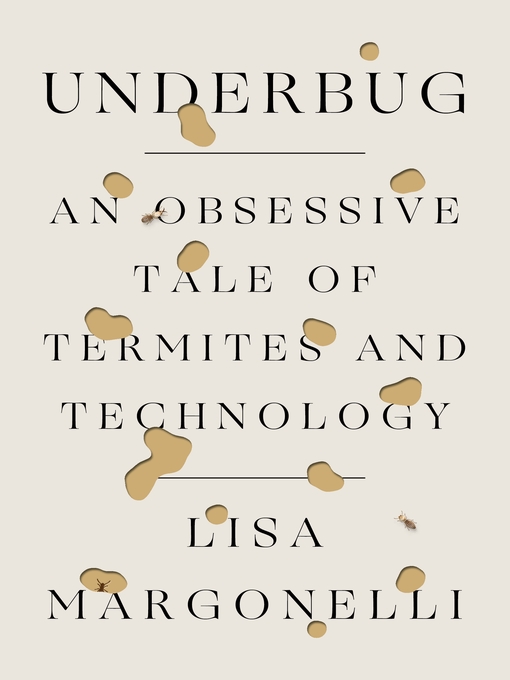The award-winning journalist Lisa Margonelli, national bestselling author of Oil on the Brain: Petroleum's Long, Strange Trip to Your Tank, investigates the environmental and economic impact termites inflict on human societies in this fascinating examination of one of nature's most misunderstood insects.
Are we more like termites than we ever imagined? In Underbug, the award-winning journalist Lisa Margonelli introduces us to the enigmatic creatures that collectively outweigh human beings ten to one and consume $40 billion worth of valuable stuff annually—and yet, in Margonelli's telling, seem weirdly familiar. Over the course of a decade-long obsession with the little bugs, Margonelli pokes around termite mounds and high-tech research facilities, closely watching biologists, roboticists, and geneticists. Her globe-trotting journey veers into uncharted territory, from evolutionary theory to Edwardian science literature to the military industrial complex. What begins as a natural history of the termite becomes a personal exploration of the unnatural future we're building, with darker observations on power, technology, historical trauma, and the limits of human cognition.
Whether in Namibia or Cambridge, Arizona or Australia, Margonelli turns up astounding facts and raises provocative questions. Is a termite an individual or a unit of a superorganism? Can we harness the termite's properties to change the world? If we build termite-like swarming robots, will they inevitably destroy us? Is it possible to think without having a mind? Underbug burrows into these questions and many others—unearthing disquieting answers about the world's most underrated insect and what it means to be human.
- Onyx Storm Read- Alikes
- Staff Reads
- In Memoriam 2024
- Cook Up Something Cozy
- Short 'n' Sweet
- Bans off Our Books
- Yo Ho Ho, a Pirate's Life for Me
- Farm to Table
- As If: Modern Books Featuring 80s and 90s Nostalgia
- Wilderness Women
- In My Libby Era: Books for Swifties
- Cowboys and Country Music
- Literary Longlists
- See all ebooks collections
- Full Cast Audiobooks
- Available now Audiobooks
- Just Added Audiobooks
- Pacific Northwest Authors & Settings
- Agatha Christie and Friends
- Books about Books
- Quick Stories
- Uplifting Listens
- Good Enough to Eat
- All You Have to Do Is Call
- Listen to the Great Outdoors
- American History
- Queerly Beloved
- See all audiobooks collections
- News & Politics
- Celebrity
- Health & Fitness
- Food & Wine
- Fashion
- Tech & Gaming
- Business & Finance
- Revistas
- Cars & Motorcycles
- Home & Garden
- See all magazines collections



